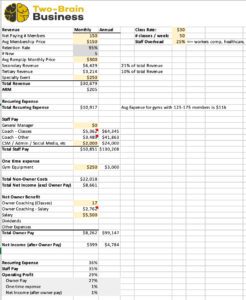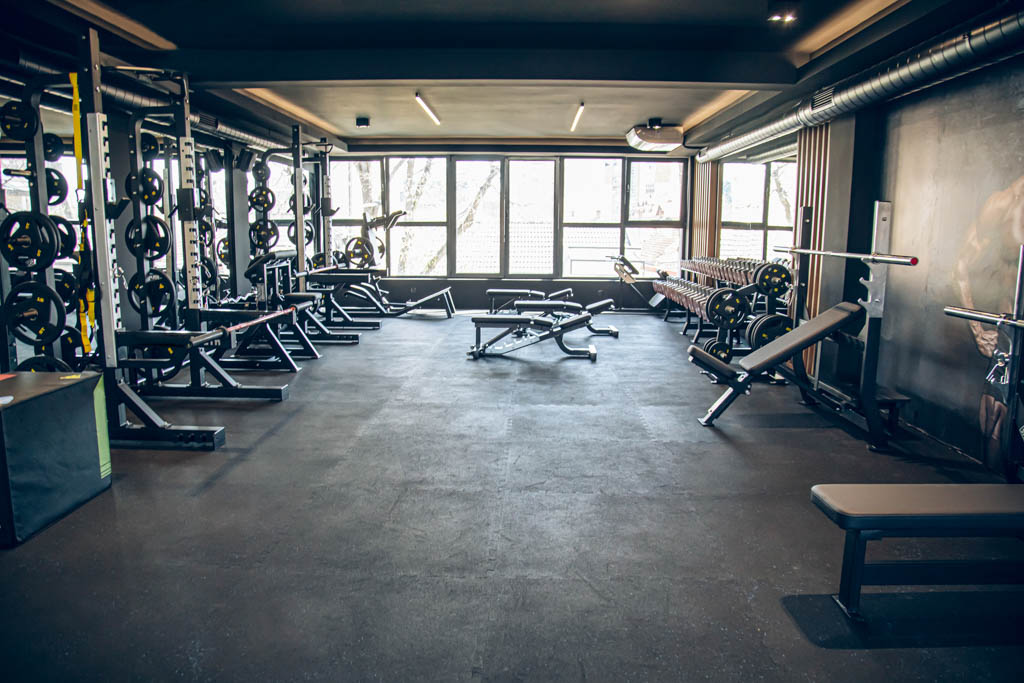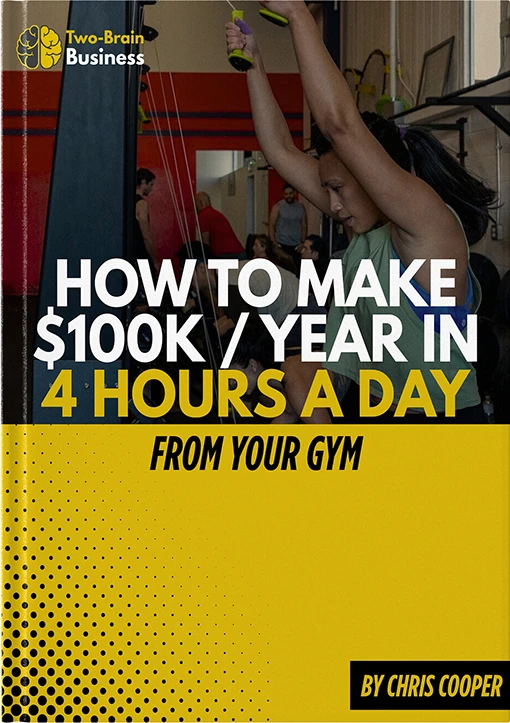Years ago in my gym, I was scared to look at my bank account. I couldn’t look at any financial document because I felt like the business was out of my control and I was scared to see what was coming next.
I wouldn’t even check my bank account the day before the rent came out.
You can’t run a business like this. Even if you hate numbers and spreadsheets.
To help, I’m going to give you a five-minute crash course on simple gym accounting.
I won’t try to turn you into a number-loving bookkeeper, but I will give you a financial tool you can use to keep your business running for the next 30 years: a customized profit-and-loss statement.
A profit-and-loss statement—a P&L—is your financial scorecard for one month. Even if you have a bookkeeper, you should know how to evaluate a P&L so you can say:
- “Why is this number so low or high?”
- “What made this number change this month?”
- “What happens to this number if I change this other number?”
- “When I do this, do I earn more as owner?” (This is a big one.)
If you know how to read and evaluate a basic financial statement, you’ll be well on your way to taking control of your business. And you’ll rarely be surprised—or horrified—when you look at your gym’s bank account.
Easy button: If you want my sample P&L document for gyms with all formulas in place, head to gymownersunited.com, find me and send me a DM.
Essential Elements of a P&L for Gyms

Gym Revenue
Number of members—You should know how many people pay you every month. A traditional P&L won’t have this number, but including it will give you a lot of insight into your fitness business.
Average membership price—All membership revenue divided by number of members. You can also just insert the price of the membership option chosen by most of your clients. (This is not average revenue per member, or ARM.)
Retention rate—What percentage of your members do you keep each month?
New clients—How many people joined last month?
Average on-ramp or initial service package price—If you multiply this number by the number of new clients, you will be able to see your monthly front-end sales revenue for on-ramps. This number should be separate from recurring revenue (monthly memberships, ongoing coaching, etc.).
Secondary revenue—This is revenue from the second most popular thing you sell. If the most popular thing you sell is group classes, then this number might represent your personal training stream. Or vice versa. You might not have a secondary revenue stream—but imagine how your gross revenue would improve if you did.
Tertiary revenue—This represents another revenue stream, perhaps nutrition coaching, kids classes or supplements. If you don’t have another revenue stream, you can leave this out.
Special event—This is for revenue generated by a competition, challenge, seminar or anything like that. In some months, this number might be zero. (We provide clients with a list of special events they can run to generate revenue, as well as plug-and-play resources that ensure they generate great ROI.)
Total revenue—All your revenue streams combined.
Average revenue per member (ARM)—Total revenue divided by total clients. In the best gyms, this number is dramatically greater than “average membership price” because it includes high-value programs and services. Our top gyms have ARM stats above $500.

Staffing Data
Class rate—What do you pay your coaches per class?
In my spreadsheet, entering the following data allows the sheet to make a number of key calculations for you:
Classes per week—The number of sessions you deliver.
Staff overhead—This is a percentage, and it covers things such as payroll tax, health insurance, workers’ compensation, etc. If your staff members are contractors, this number could be zero.
Fixed/Recurring Expenses
Create a line for everything that flows out of your business. Here is a list of very common expenses in coaching gyms:
- Affiliation
- Cleaning
- Events
- Insurance
- Loan repayment for buildout
- Marketing/advertising
- Meals/entertainment
- Member retention
- Merchant fees
- Office supplies/facilities
- Pro-shop restock
- Rent
- Software (website, gym management)
- Mentorship/training/education
- Utilities
Add everything up and you will have the total amount of outflows that are not related to staffing/service delivery and owner benefit. This number is your total recurring expense.
Staff Expenses
Salaries—Add in all wages paid out that are not tied to revenue or coaching. These people get paid even if the gym is closed during a snowstorm. We recommend you have one line for full-time roles—for example, a GM in some gyms—and another line for part-time roles such as client success manager (CSM), social-media manager, administrator, etc.
Coaching: classes—This number is auto filled on my sheet if you entered the staffing data I recommended above. This is your class rate times the number of classes your staff members run in a month, with overhead included.
Coaching: other—This is the cost of delivering services related to your on-ramp and secondary and tertiary revenue streams. In a well-managed gym, this “expense” is tied to revenue. For example, in Two-Brain gyms, an on-ramp coach might be paid a maximum of 44 percent (4/9ths) of on-ramp revenue. My sheet will calculate this for you.
Total staff pay—This is the total of all staff expenses.

One-Time Expenses
Gym equipment—This line could be zero. You could add in other lines for similar expenses. The goal is to catch irregular expenses that are sometimes forgotten because they don’t fall into any of the recurring-expense categories.
Totals
Total non-owner costs—This is fixed expenses plus staff expenses plus one-time expenses—everything that goes out before the owner gets paid.
Total net income (excluding owner pay)—This is total revenue minus total non-owner costs. An owner can be paid a portion—or all—of this money.
Net Owner Benefit (NOB)
Owner coaching (classes)—Track the classes you coach so you can be paid for them.
Owner coaching—You are paid the same amount per class as your coaches, including overhead. You must pay yourself for service delivery. If you work for free and enter “$0,” you will not have a clear financial picture, and you can never offload the coaching role. No one else will work for free. Pay yourself for coaching. My sheet is set up to calculate this number based on the number of classes you enter for yourself.
Owner salary—This is your wage for being the CEO. You get paid this wage even if the gym is closed for a snowstorm. As CEO, it is your responsibility to grow the business. Learning how to read a P&L is a big step in the right direction. As you read this, you are behaving like a CEO.
Dividends—If you pay yourself dividends, enter them here. This will depend on your ownership/corporate structure.
Other expenses—If the business takes care of expenses for you—a cell phone, a vehicle, etc.—enter them here.
Total owner pay—This is all the money paid to you.
Net Income
Net income after owner pay—This is total net income (excluding owner pay) minus total owner pay. It is the profit that stays in the business.
Percentage Breakdown
We recommend you calculate the following percentages (again, our sheet will do this for you):
- Recurring expenses as a percentage of gross revenue.
- Staff pay as a percentage of gross revenue.
- Operating profit as a percentage of gross revenue (this can be broken down further into owner pay, one-time expense and net income).

Experiment and Learn
Now that you know what should go on a P&L and what each line represents, I’d recommend you play with the numbers in a “sandbox” copy of your spreadsheet where you can run little experiments.
Reminder: If you don’t want to build this spreadsheet, you can just ask me for mine. DM me on Facebook or connect with me in the Gym Owners United group.
Make changes like this and see what happens:
- Increase the price of your most common membership package.
- Add more clients.
- Improve your retention rate.
- Pay yourself more.
- Eliminate redundant expenses.
- Tie staff costs to revenue.
- Sell more on-ramps.
- Generate more secondary and tertiary revenue.
When you experiment like this, you learn exactly how the numbers in your business are connected. And that will allow you to make plans to improve all your metrics.
This financial literacy isn’t optional when you’re the CEO of a fitness business. Don’t worry—you can acquire the skills you need to become a great CEO.
Here’s the thing: Just like you can build your own spreadsheet, you can also learn to be a CEO on your own.
Or you can get my spreadsheet today and—similarly—use a mentor to acquire skills fast. A mentor will look at your P&L, help you understand it, tell you which numbers need to be improved first and then put together a precise tactical plan to improve them.
I want to help you optimize your gym and earn what you’re worth in three months, not 30. That’s what mentorship is all about. It’s showing you the path forward and moving as fast as possible. It’s helping you take control of your business and then guiding you through those changes. It’s providing focus and accountability.
I really want you to get a mentor. Let’s start by getting you a P&L. Go to gymownersunited.com and shoot me a DM.
And if you really want to step on the gas, book a call to talk about mentorship.

